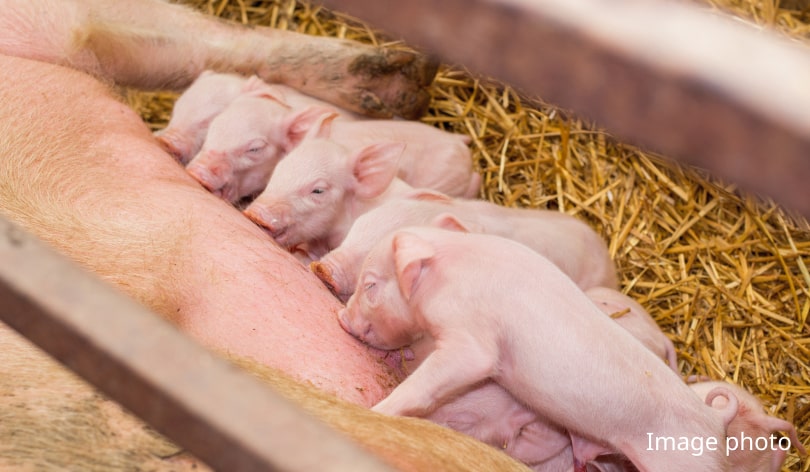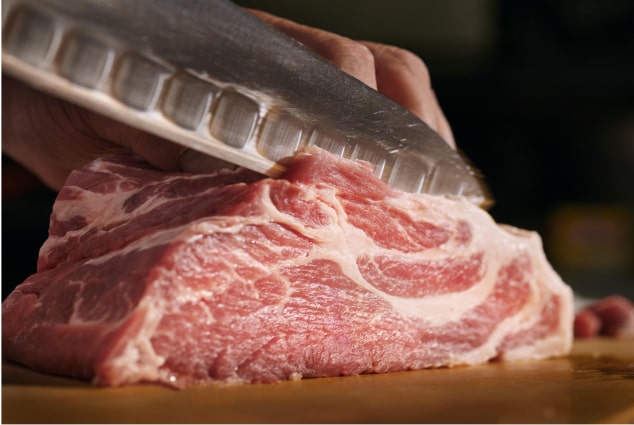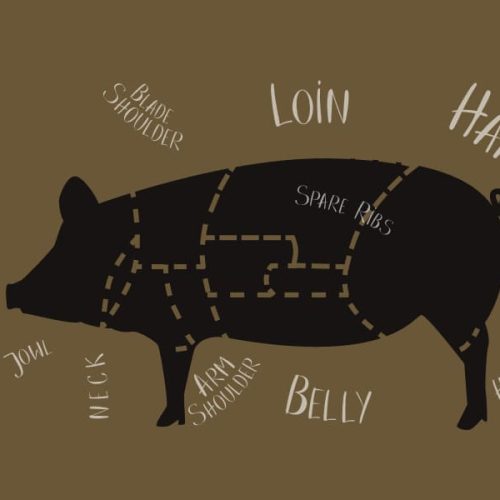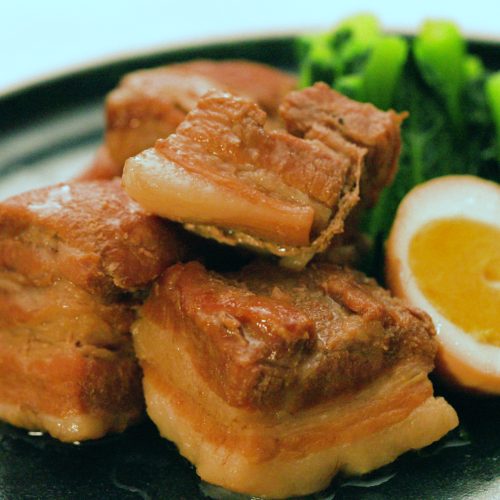- COLUMN
About the pork we eat. Porkology vol.1

Pork is eaten on a daily basis not only in Japan but also overseas. In some cases, it is not possible to eat it for religious reasons, but it is the world’s number one in terms of consumption, surpassing chicken. According to 2019 statistics (according to the Food and Agriculture Organization of the United Nations), 36.4% of all meat, or 12.5 million tons, is consumed.
In this first installment of “Porkology,” we would like to provide a comprehensive introduction, highlighting common methods of raising pigs in Japan and the breeds of pigs.
Pork is the most familiar and consumed all over the world.
General breeding process in Japan

Breeding methods may differ depending on the breed or brand, but let’s take a look at the basic breeding process in Japan.
After a gestation period of 114-116 days, pigs give birth to an average of 10-15 piglets. After giving birth, the piglets are kept separate from their mother so that they do not accidentally press down on the mother sows. In most cases, piglets are raised to a weight of around 120kg in about 5 to 6 months, but a newborn piglet weighs about 1.5 kg, so you can see that they grow at an amazing speed.
A piglet born to a sow is breastfed for about three weeks. Breast milk is rich in immune components that protect the body from diseases, so the piglets grow up drinking nutritious breast milk.
The piglets are then fed separately from their mother. As it grows, it changes from easy-to-digest food to unique nutritionally balanced food, and grows quickly. Strict health management and sanitary standards are required throughout the entire process, and high quality standards are set to provide safe pork.
Common pig breeds
A wide variety of breeds are bred around the world, including Great Yorkshire, Landrace, Duroc, Berkshire, Hampshire and Middle Yorkshire. Here is a brief overview of the characteristics of each variety.
(:Varieties used in “Yume no Daichi”)
Large Yorkshire pig
A white-haired breed that originated in Yorkshire, England. It is large, has erect ears, and weighs more than 350 kg when it becomes an adult pig. The meat has a lot of red meat and is highly valued as a raw material for processing. Besides Japan, it is widely bred in the United Kingdom and the United States, and is known as a breed that grows quickly and is excellent for breeding.
Landrace pig
A breed with a white coat that was created by crossing a native Danish breed with a large Yorkshire breed. It is characterized by its large size, straight nose, and large drooping ears. Due to its thin backfat and high lean meat, it is commonly used for processed foods such as bacon. In addition to being the most common breed in Japan, it has high litter size and milk production, and has excellent reproductive ability.
Duroc pig
A reddish-brown breed of pig native to America. They are characterized by their large drooping ears, and are well-boned, well-fleshed, and known for being highly active. Because it marbling easily and the meat is soft and juicy, it is highly valued as a high-quality meat and is widely raised around the world.
Berkshire pig
A relatively old breed originating in England, this breed is called “Kurobuta” in Japan. It is sometimes called “Rokuhakubuta” because it has white fur on the tip of its nose, the tips of its limbs, and the tip of its tail, while its entire body is black. It is known as pork with a good balance of lean meat and fat, excellent taste and texture, and no odor. It is one of the available varieties.
Hampshire pig
A breed native to Hampshire, England. They often have black hair, short legs, and a distinctive body shape. They are easy to care for, are considered hardy, and are often suitable for free-range and outdoor use. In particular, it is characterized by the excellent meat quality of parts that are considered to be high-grade parts of pork, such as shoulders, fillets, and ribs.
Middle Yorkshire pig
A white breed of pig originating in England. It has a rather large body with semi-dropped ears, is strong and has high fecundity, so productivity is good. Because it is easy to raise and the breeding period is relatively short, the production volume is large, contributing to the stable supply of pork. It is widely bred in Japan and is one of the essential breeds for pork production.
Sangenton, Yongenton, and branded pork “Yume no Daichi”

In the meat section of supermarkets in Japan, you often see packages labeled “Sangenton”. That’s no wonder, because more than 70% of the pork distribution in Japan is “Sangenton”.
“Sangenton” and “Yongenton” are pork made by crossbreeding 3 and 4 breeds of pork, respectively. By combining pig breeds with different characteristics, it is possible to take over the excellent characteristics of the original breed and to expect a “hybrid vigor effect”*1 by crossbreeding. Sangenton and Yongenton have become the mainstream of meat production.
“Yume no Daichi” is a well-balanced combination of four breeds, and is an original Japanese pork. Inheriting the characteristics of each breed, it has no odor, has a smooth and juicy texture like silk, and is characterized by creamy fat. You can enjoy the feeling.
Point
*1 The hybrid vigor effect is a phenomenon in which crossing different breeds results in the offspring having traits superior to those of the parents. The genetic diversity of the offspring increases, and as a result, the survival rate, reproductive capacity, growth rate, disease resistance, adaptability, etc. of the organism are improved.
“Porkology” that focuses on the pork itself. In the first installment, we introduced pork and Yume no Daichi in a broad framework, including the breeds and growth process. Pork, which is widely consumed not only in Japan but also all over the world, is one of the essential ingredients for us humans to live. I would like you to read various information on this site, not limited to this article, and learn more about pork.
From the next time onwards, we will gradually introduce more specialized content, so please look forward to it!!
Editor

MAKITA Yoshimi
Registered Dietitian
She has experience in product development and specific health guidance for a food service company.
In addition to her extensive field experience as a registered dietitian, she is involved in column writing and nutritional calculations.
She specializes in creating menus for people with health issues.










